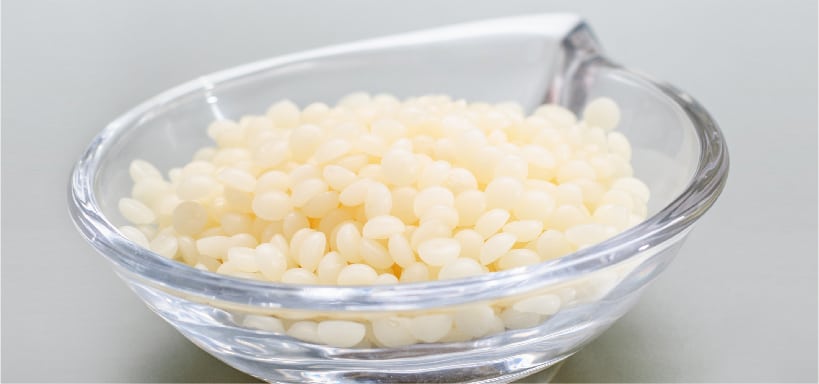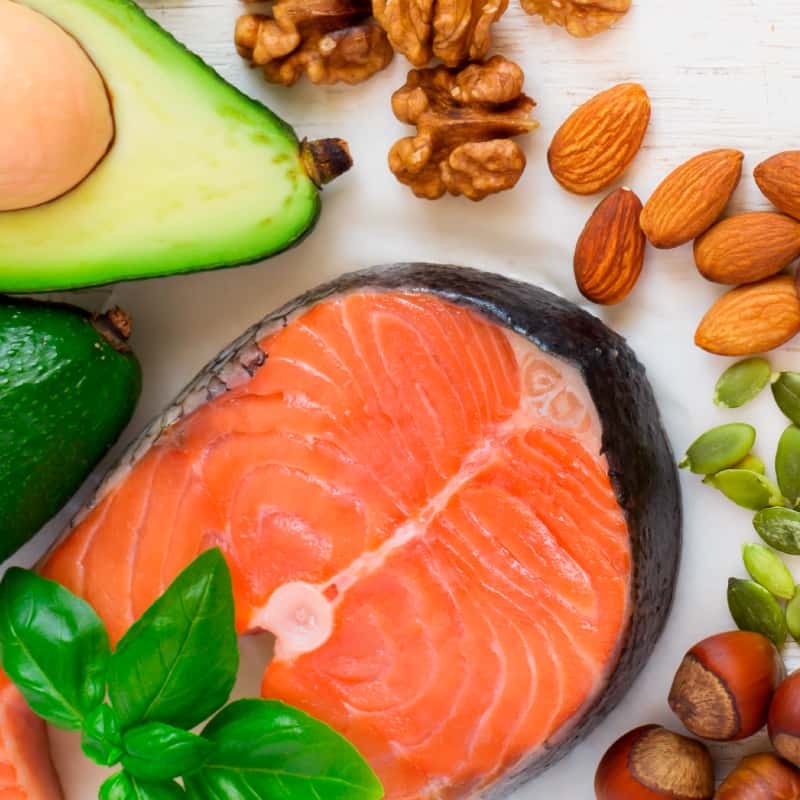This Dr. Axe content is medically reviewed or fact checked to ensure factually accurate information.
With strict editorial sourcing guidelines, we only link to academic research institutions, reputable media sites and, when research is available, medically peer-reviewed studies. Note that the numbers in parentheses (1, 2, etc.) are clickable links to these studies.
The information in our articles is NOT intended to replace a one-on-one relationship with a qualified health care professional and is not intended as medical advice.
This article is based on scientific evidence, written by experts and fact checked by our trained editorial staff. Note that the numbers in parentheses (1, 2, etc.) are clickable links to medically peer-reviewed studies.
Our team includes licensed nutritionists and dietitians, certified health education specialists, as well as certified strength and conditioning specialists, personal trainers and corrective exercise specialists. Our team aims to be not only thorough with its research, but also objective and unbiased.
The information in our articles is NOT intended to replace a one-on-one relationship with a qualified health care professional and is not intended as medical advice.
What Is an Emulsifier? Uses and Risks of Their Use in Foods
September 12, 2024

If you eat packaged foods somewhat regularly, then you already likely consume emulsifiers even if you aren’t aware of it. Are emulsifiers bad for you or potentially beneficial? It really depends on the kind.
You will find different emulsifier types in several different foods, including baked goods, dairy products, nut butter, margarines, ice cream, sauces, salad dressings and more.
Some are derived naturally from foods, such as eggs or seeds, while others are man-made and potentially more difficult to digest. This is especially true if they’re combined with other additives in ultra-processed foods.
Let’s dive in to the different types of emulsifiers you’re likely to come across, plus the pros and cons of consuming foods that contain them.
What Is an Emulsifier?
Emulsifiers (also called emulgents) are food additives used to help keep different ingredients within foods together. They prevent ingredients from separating and therefore maintain the texture, taste and appearance of foods.
The definition of “emulsion” is “a mixture of two or more liquids that are normally immiscible,” (meaning liquids that won’t form a homogenous mixture without help from additives, especially oil and water).
Emulsifiers can be derived from plants or animals, or made synthetically. They have many functions in food processing, and there are many different types of emulsifiers that are used, depending on the specific product and the purpose.
For example, some help with making foods (or other things like skin care products ) feel creamy, thick or foamy. Others help prevent crystallization, stickiness, or stop water and oil from separating.
What is an example of an emulsifier? One of the most widely used is lecithin, which is derived from foods that contain fats, such as eggs, soybeans, meat and sunflower seeds. It’s a common additive in foods like baked goods, chocolate and ice cream.
Common Food Emulsifiers
Food emulsifiers include ingredients such as:
- Soy lecithin — This is one of the most common types; unfortunately it’s produced from soybeans, which are often genetically modified and sometimes hard to digest, plus it can potentially cause allergenic reactions.
- Sunflower lecithin — This is a good alternative to both egg and soy lecithin because it’s vegan, non-allergenic, non-GMO and requires gentler extraction methods
- Egg yolk lecithin — An emulsifier and wetting agent, studies show it also displays physiological activities as an antioxidant, antibacterial and anti-inflammatory.
- Guar gum, gellan gum and other “gums” like gum arabic, locust bean gum and xanthan gum — These are created by dehusking, milling and sorting a type of legume. These products used to stabilize, emulsify and thicken the texture of certain foods and industrial products.
- Carrageenan — Derived from red algae or seaweeds, carrageenan is processed through an alkaline procedure to produce what many consider to be a “natural” food ingredient.
- Pectin (a carbohydrate that’s found in some fruits) — It’s used as a thickening agent and ingredient in digestive remedies, like natural laxatives.
- Gelatin (derived from partial hydrolysis of collagen) — Made from dehydrating parts of animals, gelatin is used in food preparation and as the basis of many jellies, desserts and candies is because it acts like a sticky adhesive, similar to a natural glue.
- Agar agar (a vegan gelatin and plant-based food thickener) — It’s a popular alternative to gelatin because it’s plant-based.
- Starch
- Chitosan — It’s a a sugar, or polysaccharide, that’s obtained from the shells of crustaceans, including shrimp, crab and lobster.
- Polyglycerol esters (PGE) and polysorbates, such as polysorbate 80 (P80)
- Stearoyl lactylates
- Propylene glycol esters (PGMS) and sucrose esters
- Carboxymethylcellulose (CMC)
- Ammonium phosphatide (AMP)
- Polyglycerol polyricinoleate (PGPR)
- Monoglycerides
Where are you most likely to find emulsifiers? In packaged and processed foods, including:
- Mayonnaise and creamy sauces
- Margarine
- Processed meats like hot dogs
- Bottled coconut or almond milk
- Soups
- Fiber supplements
- Ice cream and some yogurts
- Salad dressings
- Chocolate
- Peanut butter and other nut butters
- Frostings, cakes and other boxed desserts
- Baked products like cookies
- Crackers and some breads
What is a natural emulsifier? Natural emulsifiers are made from plants and animal products — and sometimes even yeast and microbes. They include ingredients like gums, lecithin and carrageenan. They’re also sometimes called hydrocolloids.
Benefits and Uses
The main use of an emulsifier is helping stabilize the mixture and prevent separation of ingredients. This improves foods’ smoothness and viscosity — plus it enhances the “mouth feel” of some products (how they feel when you’re eating them, such as melty and rich).
Depending on the specific type, other potential benefits and uses can include:
- Improving thickness and volume of products.
- Enhancing the taste and appearance of foods (making colors more uniform, etc.).
- Prolonging the shelf lives of different products by maintaining their freshness for longer.
- Keeping whipped products airy and light.
- Preventing foods from being overcooked or from softening.
- Aiding in nutrient absorption — for example, lecithin can help with absorption of fat-soluble vitamins, such as vitamins A, D, E and K. Lecithin also provides choline, which is an essential nutrient needed for cognitive health.
- Helping maintain healthy blood sugar and cholesterol levels — Supplementing with lecithin can cut total cholesterol levels, while guar gum may help decrease spikes in blood sugar.
- Aiding in gut/gastrointestinal health — Some provide nutrients that heal the GI tract barrier. For example, pectin, gums and starches can provide probiotics that help feed healthy probiotic bacteria in the gut. Natural emulsifiers might also help you feel fuller since they can contain fiber.
- Moisturizing the skin — In skin care products, emulsifiers act as emollients to lock in skin’s oils and water. This can help relieve irritated, dry skin.
- Forming gel-like consistencies in products that are used on the hair or the body.
- Adding thickness to toothpastes.
- Adding bulk to laxatives that might help treat constipation.
- Keeping ingredients in medications or supplements bound and free from separating.
Risks and Side Effects
In the U.S., the Food and Drug Administration (FDA) considers many emulsifying ingredients in foods as “generally recognized as safe.” The FDA has specific guidelines about which types can be used and in what amounts to prevent adverse reactions.
Why might some emulsifiers be bad for you? The more natural emulsifiers, such as guar gum and lecithin, are associated with few health risks when consumed in normal or small amounts. If you consume lots of them, they might lead to digestive issues such as diarrhea, abdominal pain, nausea and bloating.
Highly processed food additives can be harder to break down, such as CMC and P80. While most research shows they are generally safe in tiny quantities, some research suggests these ingredients may have effects on microbiota in the gut and might possibly increase inflammation and affect metabolic processes by altering the gut barrier.
The good news is that emulsifiers are often only used in small amounts in foods. Still, if you experience any side effects when eating processed foods that contain emulsifiers, consider decreasing your dosage or consulting with your healthcare professional.
Generally speaking, it’s best to emphasize whole foods in your diet that do not contain any additives, so this is a smart habit no matter how well you tolerate emulsifiers.
How to Determine Safety
If you want to avoid potentially harmful emulsifiers, choose organically produced products made with minimal ingredients. Remember: You won’t find any food additives at all in things like vegetables, fruits, 100 percent whole grains, eggs, fish, nuts or seeds.
Read ingredient labels when purchasing foods so you know what you’re consuming.
Sunflower lecithin is a good option if you do eat foods made with one or more emulsifiers. Sunflower lecithin is generally safe and can be consumed with minimal risk of side effects.
This type of emulsifier is very unlikely to be genetically modified (especially if it’s organic) and doesn’t undergo as intense of an extraction process compared to other food additives, including lecithin produced from soy or egg yolks.
Guar gum, pectin and starches can also make good emulsifiers, since these are more naturally derived and even have some benefits to offer — such as help with blood sugar and cholesterol management, digestion, and feeling full.
Conclusion
- What exactly is “emulsifying” in food? Emulsifying is the process of combining ingredients that normally don’t mix well and stay together, such as “immiscible” food ingredients like oil and water.
- Food manufacturers add emulsifiers to foods to support their structure, texture, flavor, appearance, mouth feel and shelf life.
- Examples include guar gum, lecithin, carrageenan, pectin, starches, and synthetic types like polyglycerol esters, polysorbates and stearoyl lactylates.
- To minimize side effects, only consume foods containing these additives in small amounts. Eating less processed foods and opting for organic items is a good way to avoid too many additives.










